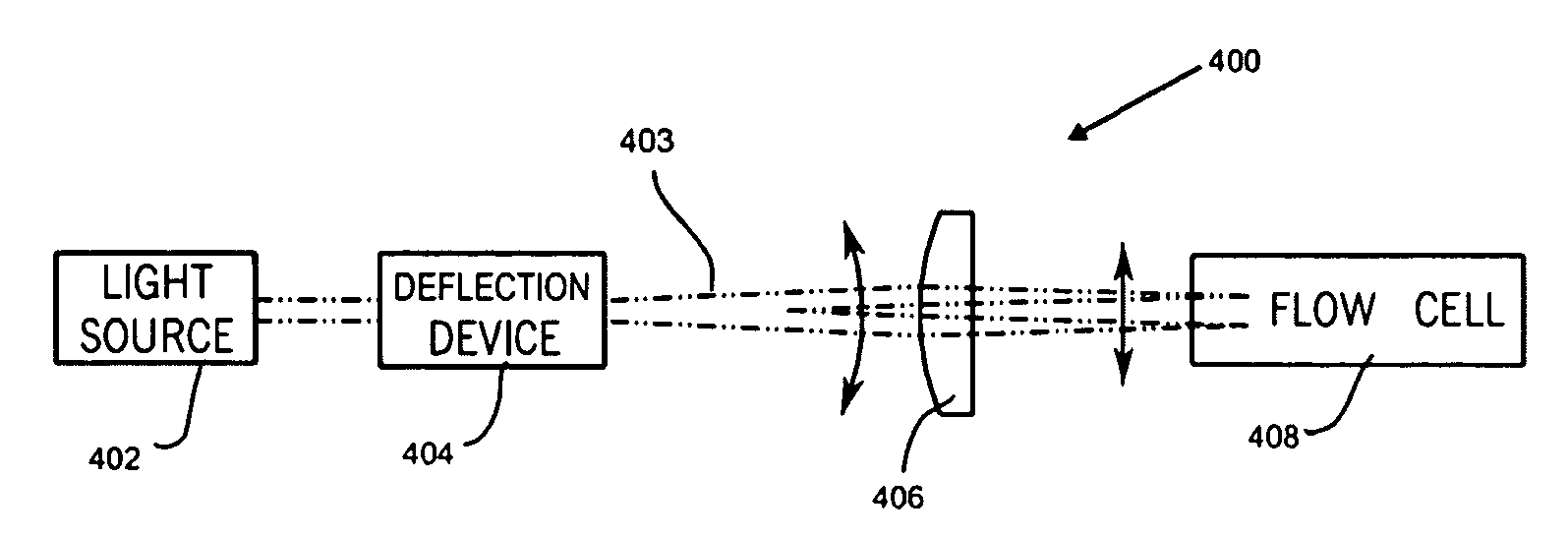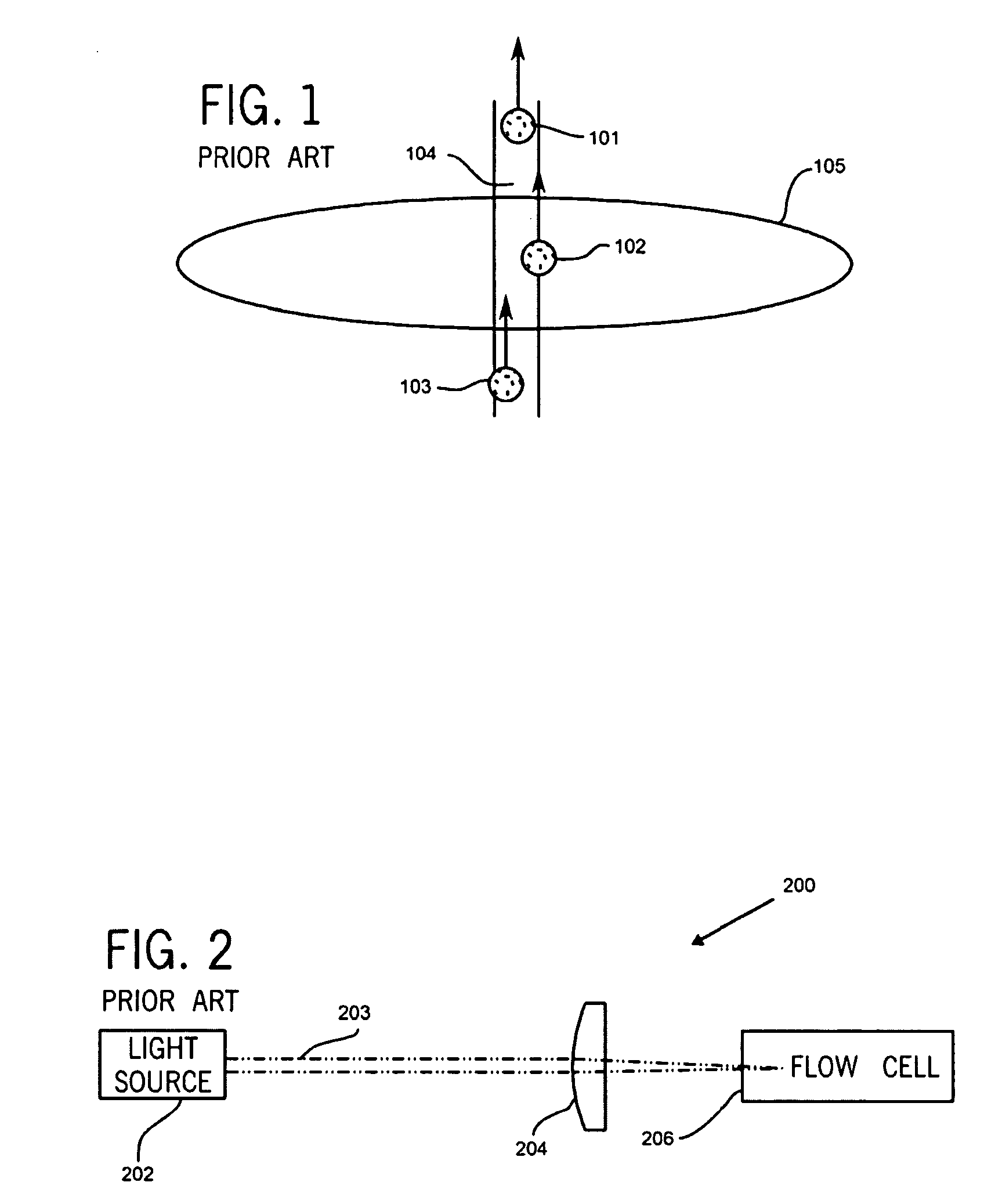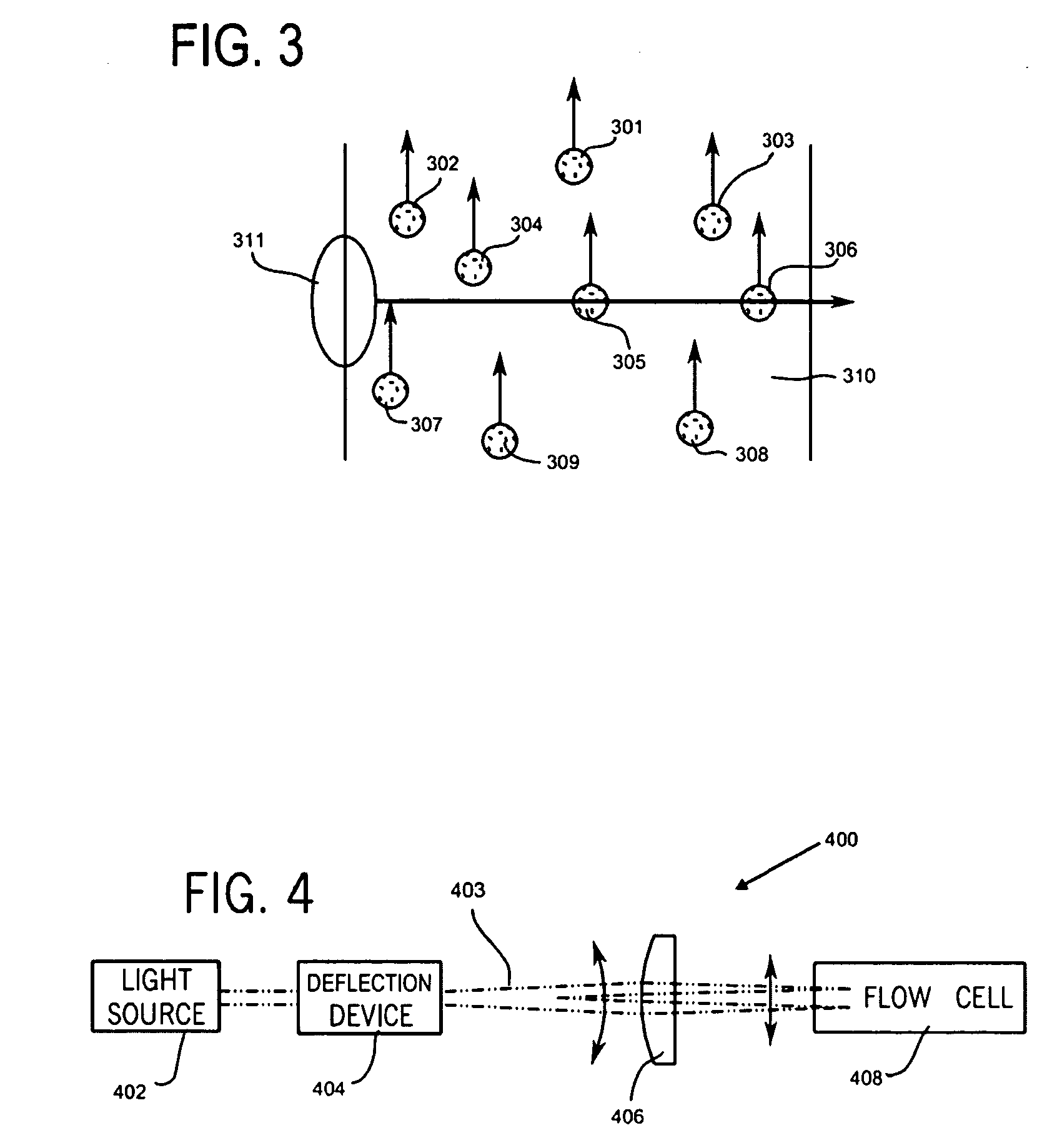Method and apparatus for rapidly counting and identifying biological particles in a flow stream
a flow stream and flow cytometer technology, applied in biochemistry apparatus and processes, instruments, material analysis, etc., can solve the problem of increasing the likelihood of potential coincidences, and achieve the effect of increasing the measurement rate and reducing the complexity
- Summary
- Abstract
- Description
- Claims
- Application Information
AI Technical Summary
Benefits of technology
Problems solved by technology
Method used
Image
Examples
Embodiment Construction
[0048]As used herein, the expression “laser rastering” refers to the novel method and apparatus described herein. However, it should be noted that the term “laser” is intended to include any source of light suitable for use in this invention. Such sources of light include, but are not limited to, lasers, light-emitting diodes (LEDs), arc lamps, plasmas, and any other source of light that is capable of providing sufficient brightness, stability or reproducibility or both stability and reproducibility of intensity and wavelength, and spectral purity. Likewise, in the description that follows, a laser will be referred to as an example of a suitable source of light, without implying that other sources of light are not included in the description of this invention. As used herein, the term “deflect” means to move a beam of light across a sample stream in a flowcell. Alternate expressions used herein which are intended to have substantially the same meaning as “deflect” include “scan” and...
PUM
| Property | Measurement | Unit |
|---|---|---|
| cycle time | aaaaa | aaaaa |
| acquisition time | aaaaa | aaaaa |
| size | aaaaa | aaaaa |
Abstract
Description
Claims
Application Information
 Login to View More
Login to View More - R&D
- Intellectual Property
- Life Sciences
- Materials
- Tech Scout
- Unparalleled Data Quality
- Higher Quality Content
- 60% Fewer Hallucinations
Browse by: Latest US Patents, China's latest patents, Technical Efficacy Thesaurus, Application Domain, Technology Topic, Popular Technical Reports.
© 2025 PatSnap. All rights reserved.Legal|Privacy policy|Modern Slavery Act Transparency Statement|Sitemap|About US| Contact US: help@patsnap.com



